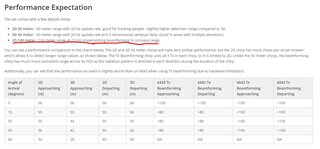Other Parts Discussed in Thread: IWR6843,
Greetings!
I appreciate your prompt response and your willingness to support us.
The signal amplification module I mentioned earlier has the part number HMC-ABH209.
We assumed that it could be combined with the IWR6843 chip to get the transmit power up.
We saw a discussion of a similar case on some threads of your site (https://e2e.ti.com/support/sensors-group/sensors/f/sensors-forum/785133/iwr6843isk-do-i-really-get-40dbm-transmit-power-when-i-set-it-in-61-0-61-5ghz-range?keyMatch=IWR6843+40DBM) and assumed that the similar request could already be resolved positively.
That is why we turned to TI with a request for support.
In our understanding, the growth in transmit power will necessarily entail
1. Increasing in the volume of processed internal data, which will inevitably entail a greater need for the internal buffer size. And this, in turn, may require the use of external memory what looks dim now.
2. In addition we would like to clarify the possibility of increasing the ADC frequency up to 25 MHz. In this case, the internal memory sizes in the IWR6843 may not be enough and external memory will also be required.
3. The changes described above, in our understanding, will necessarily require modification of the firmware for the correct configuration of the overall system. And again, that's why we came to you.
Summary: the task that we now face is the following:
1. We want to increase the detection distance using TI chips (IWR6843+HMC-ABH209)
2. We would like to increase the ADC frequency up to 25MHz.
The query itself looks like this: does TI already have ready-made solutions with the indicated chips or others more suitable for our case?
If so, do you have designs and/or any descriptions that we could use for our goals?


